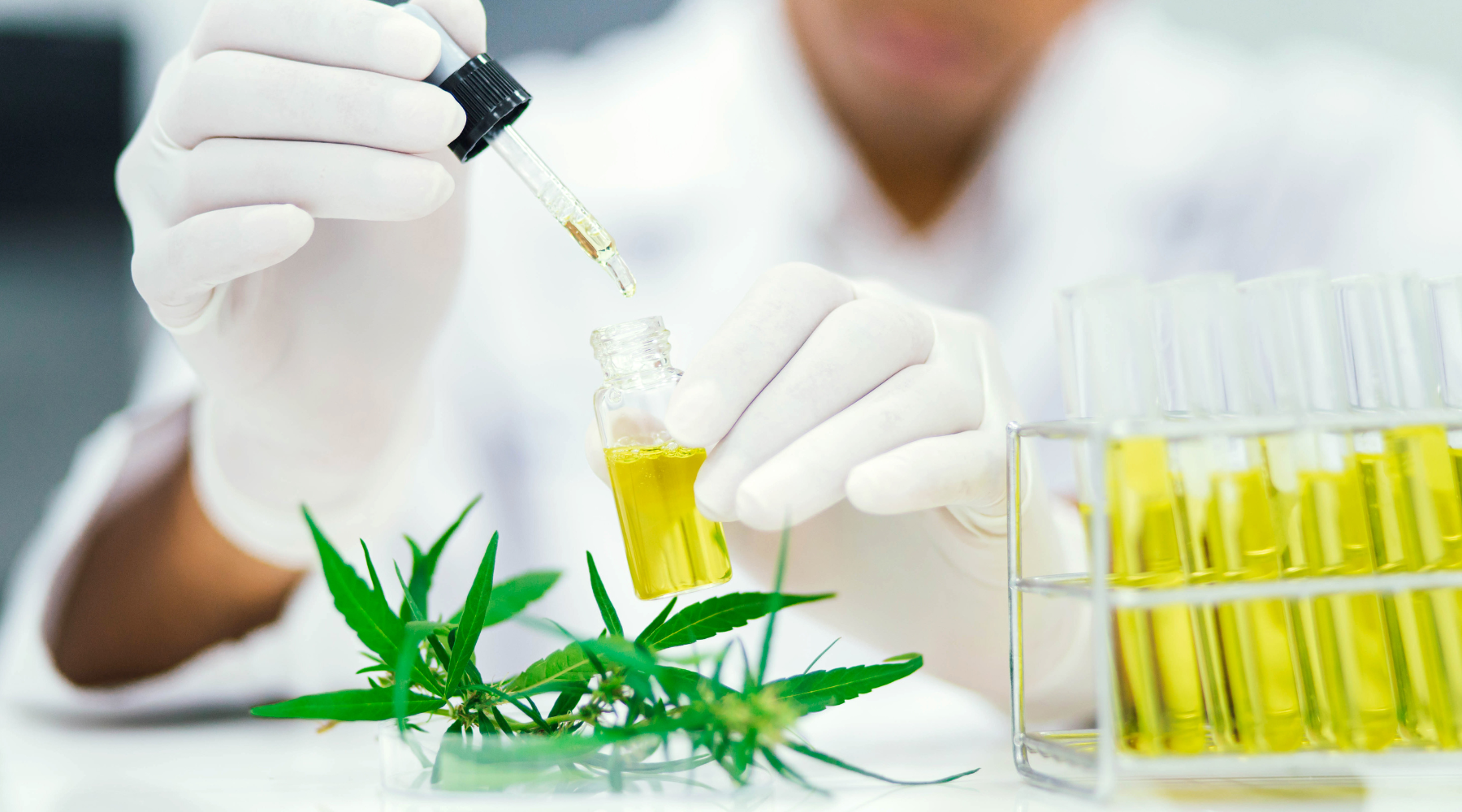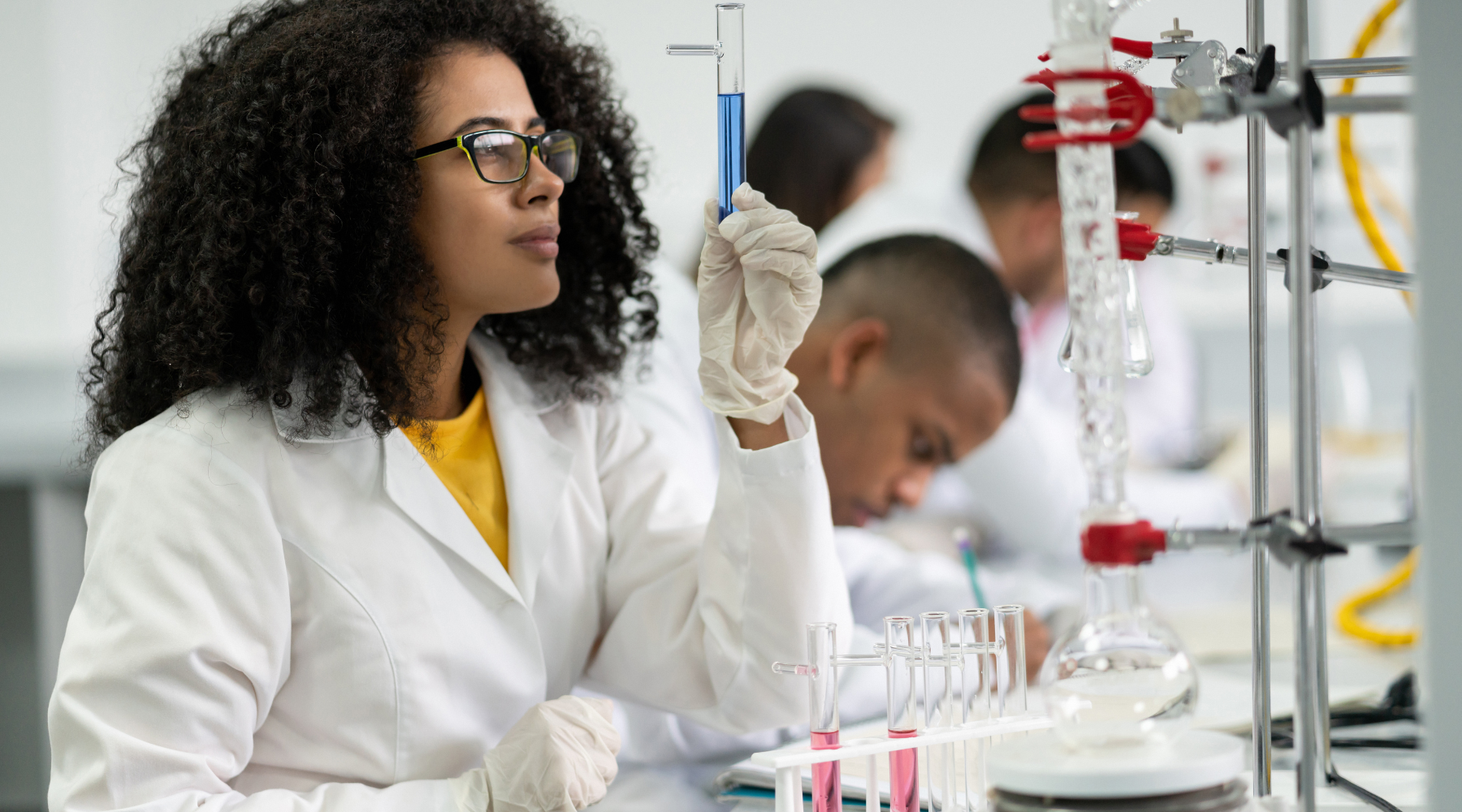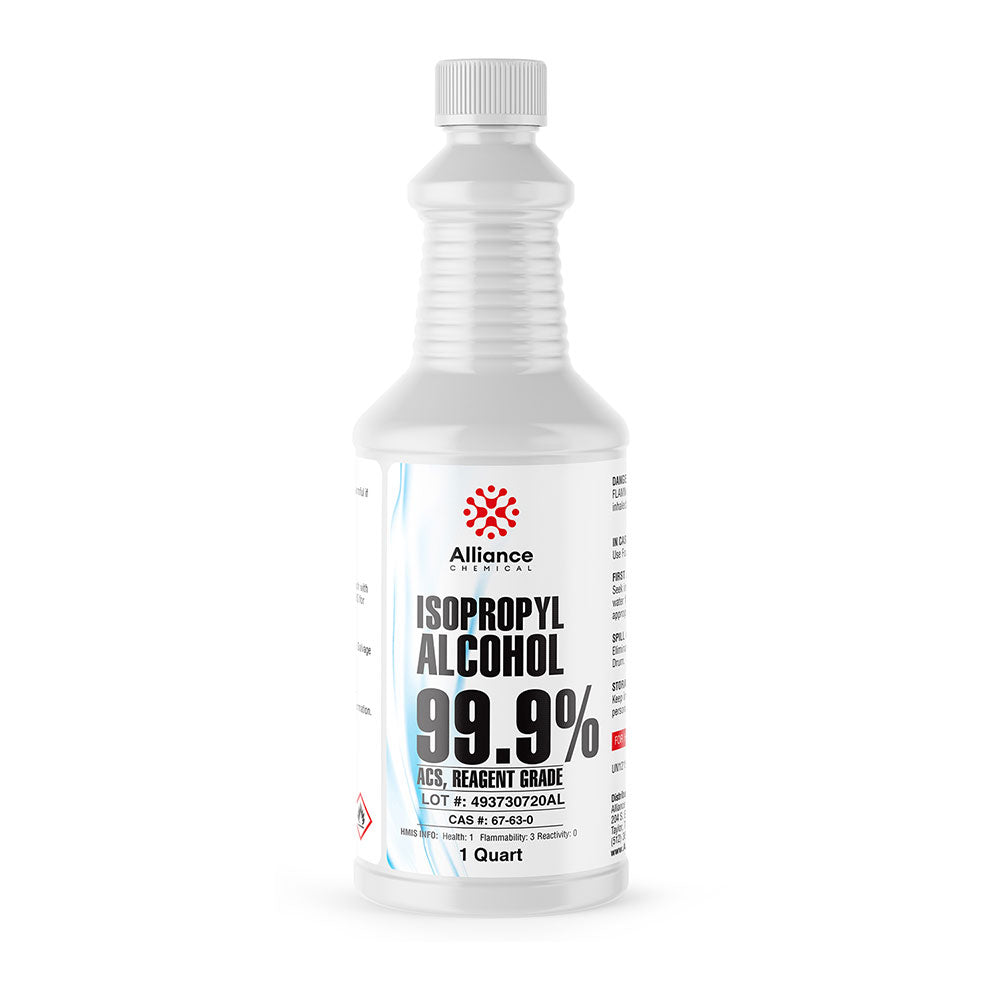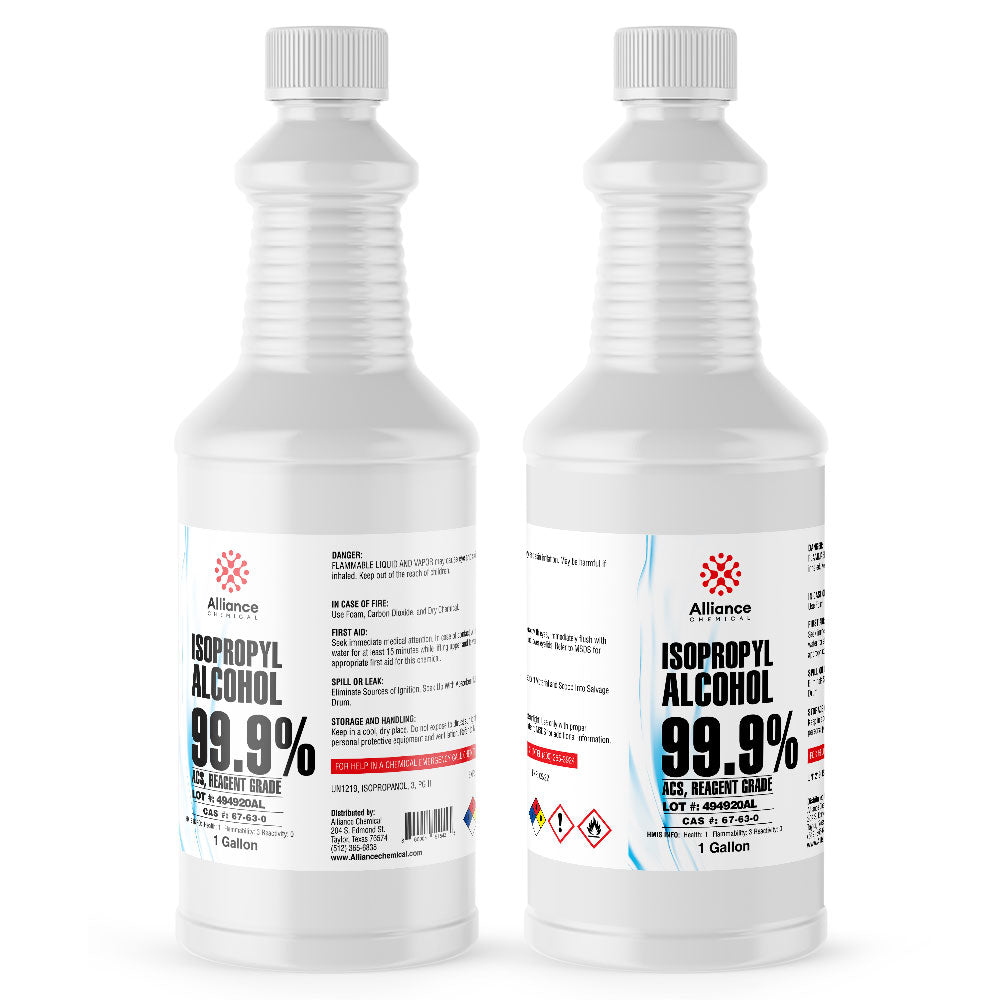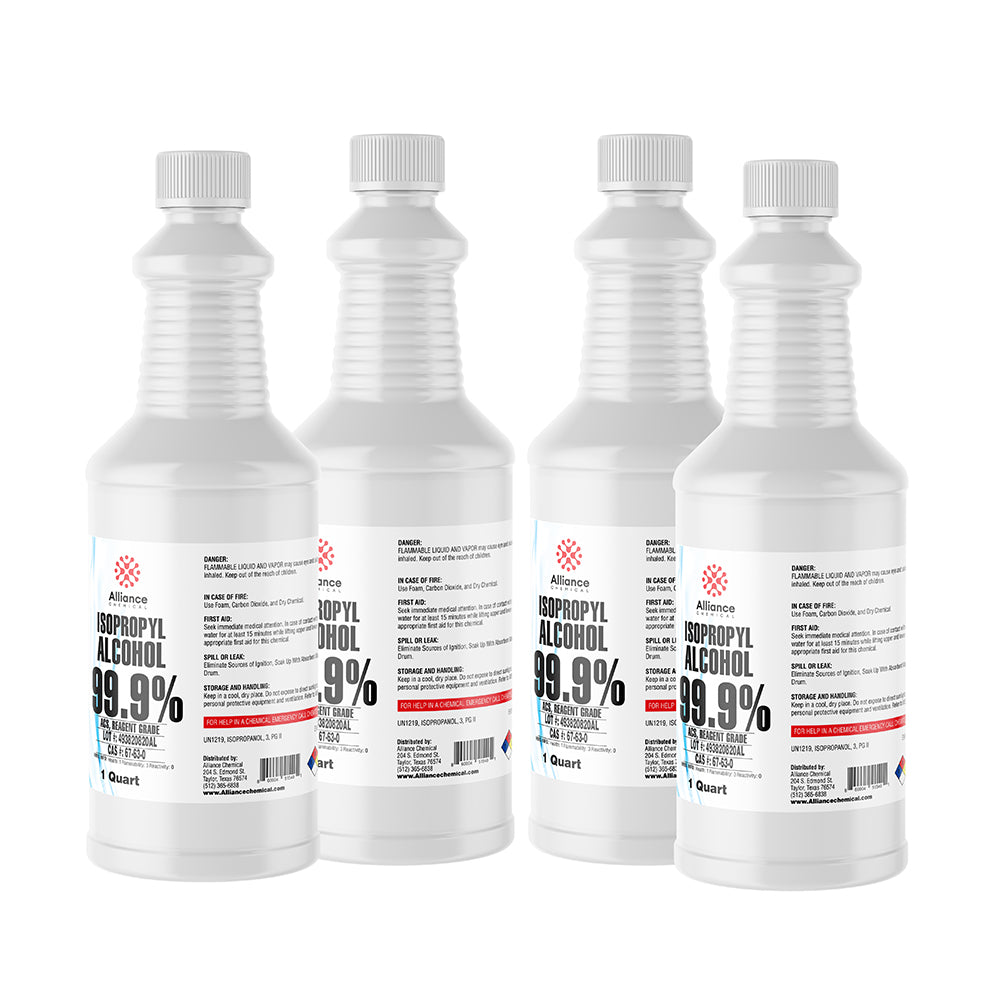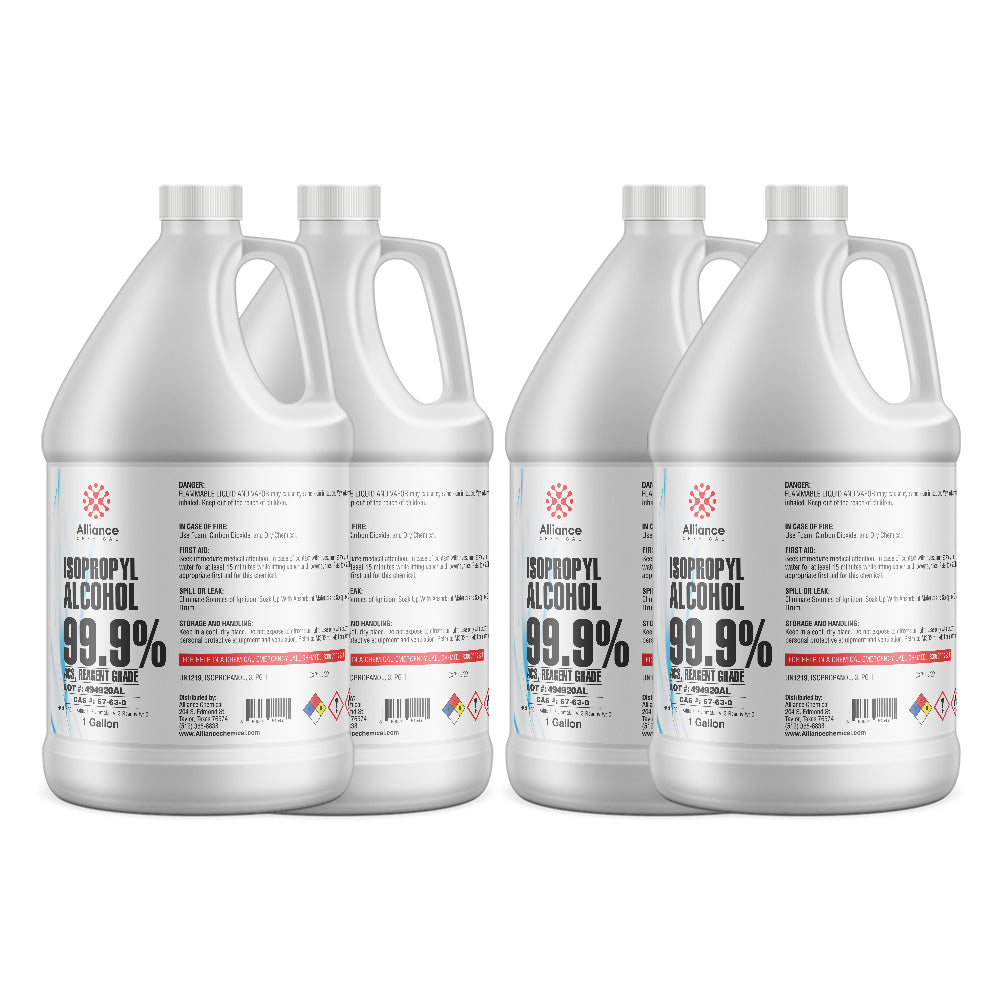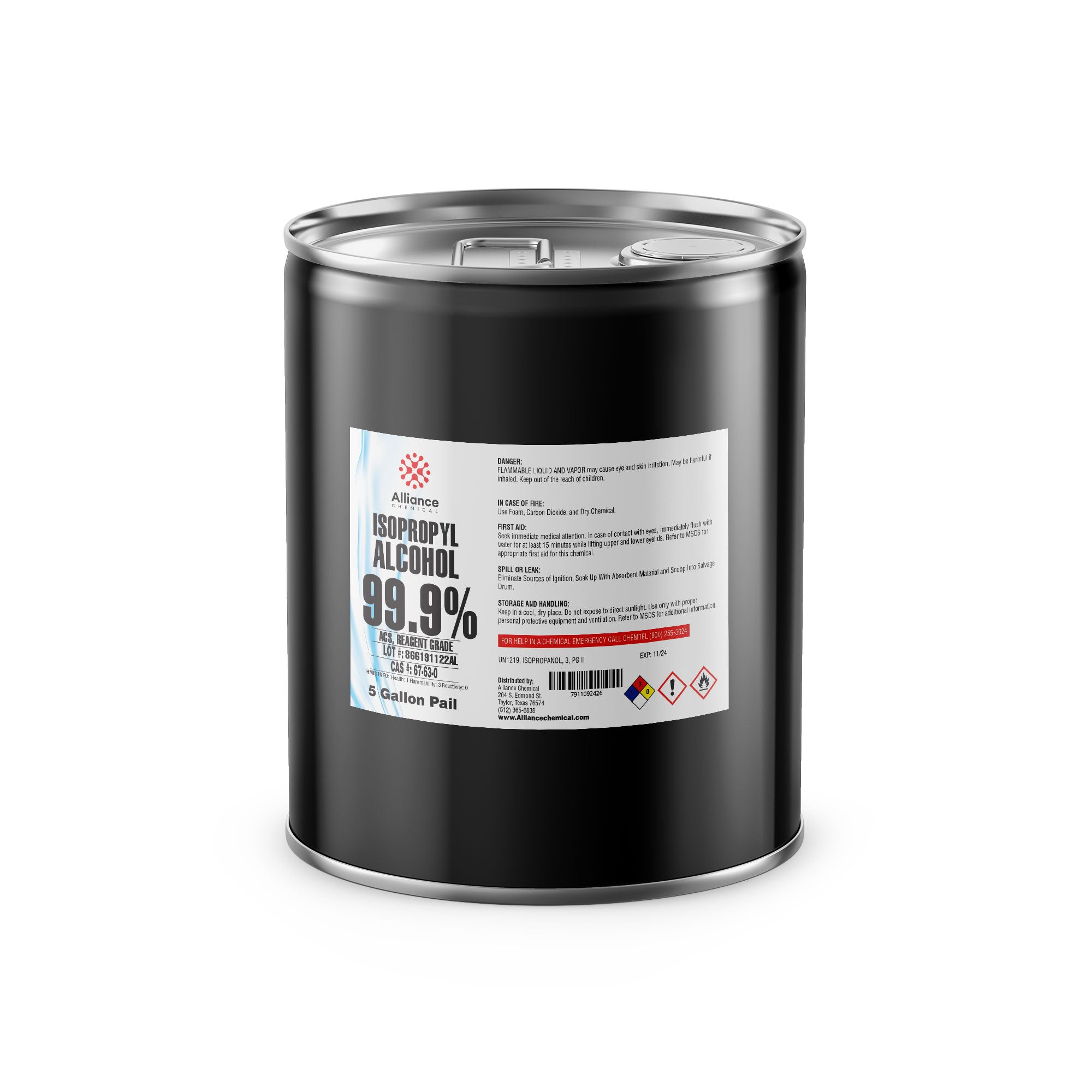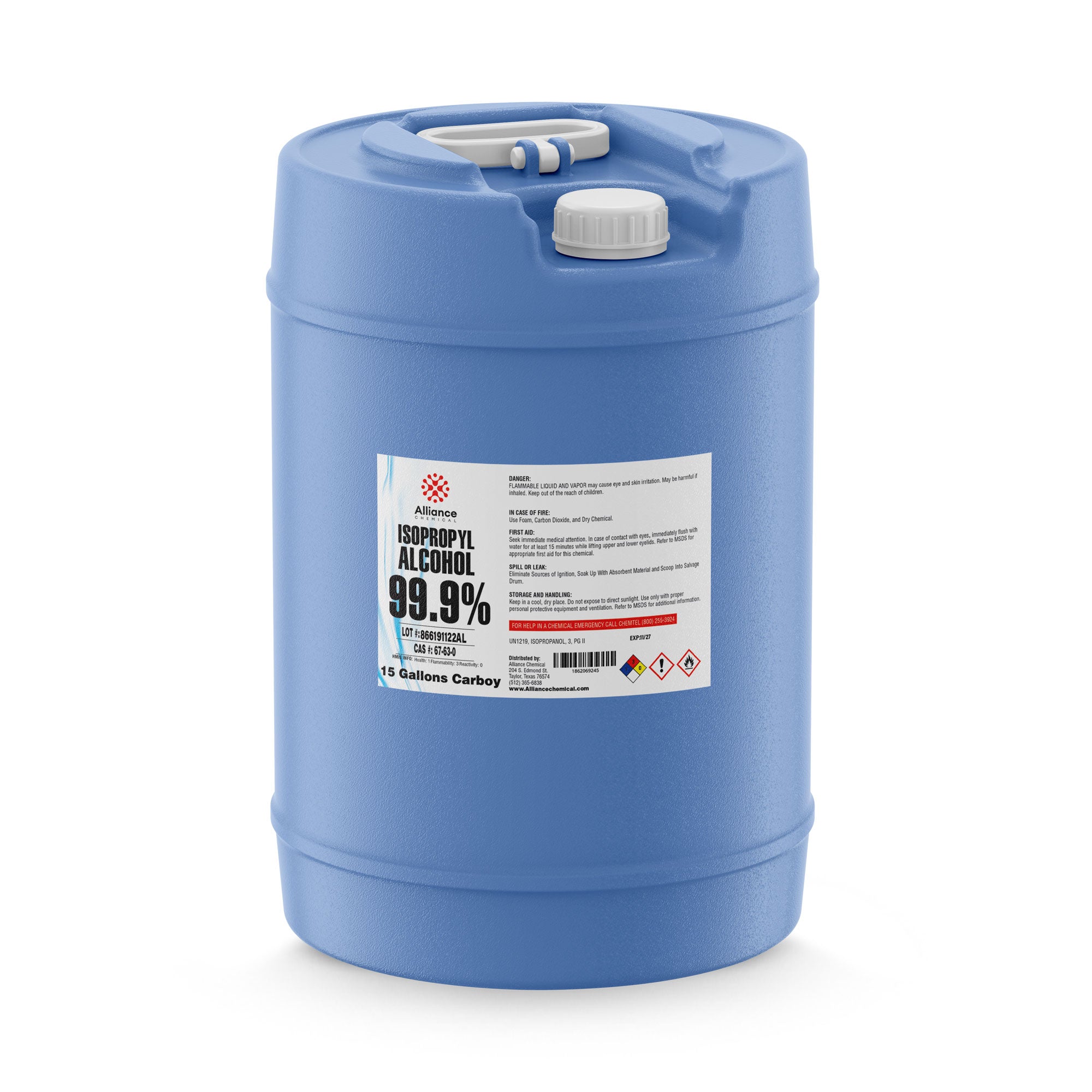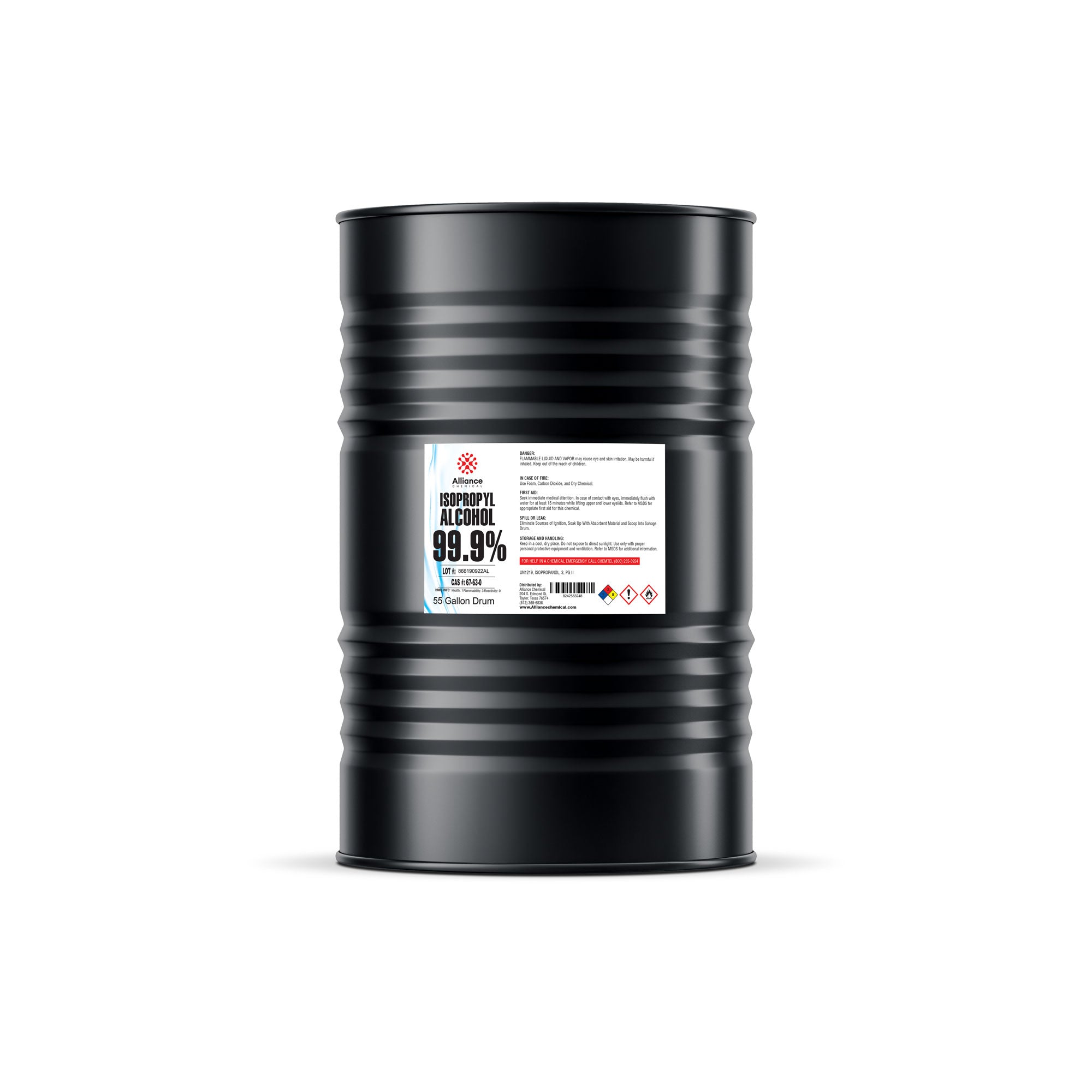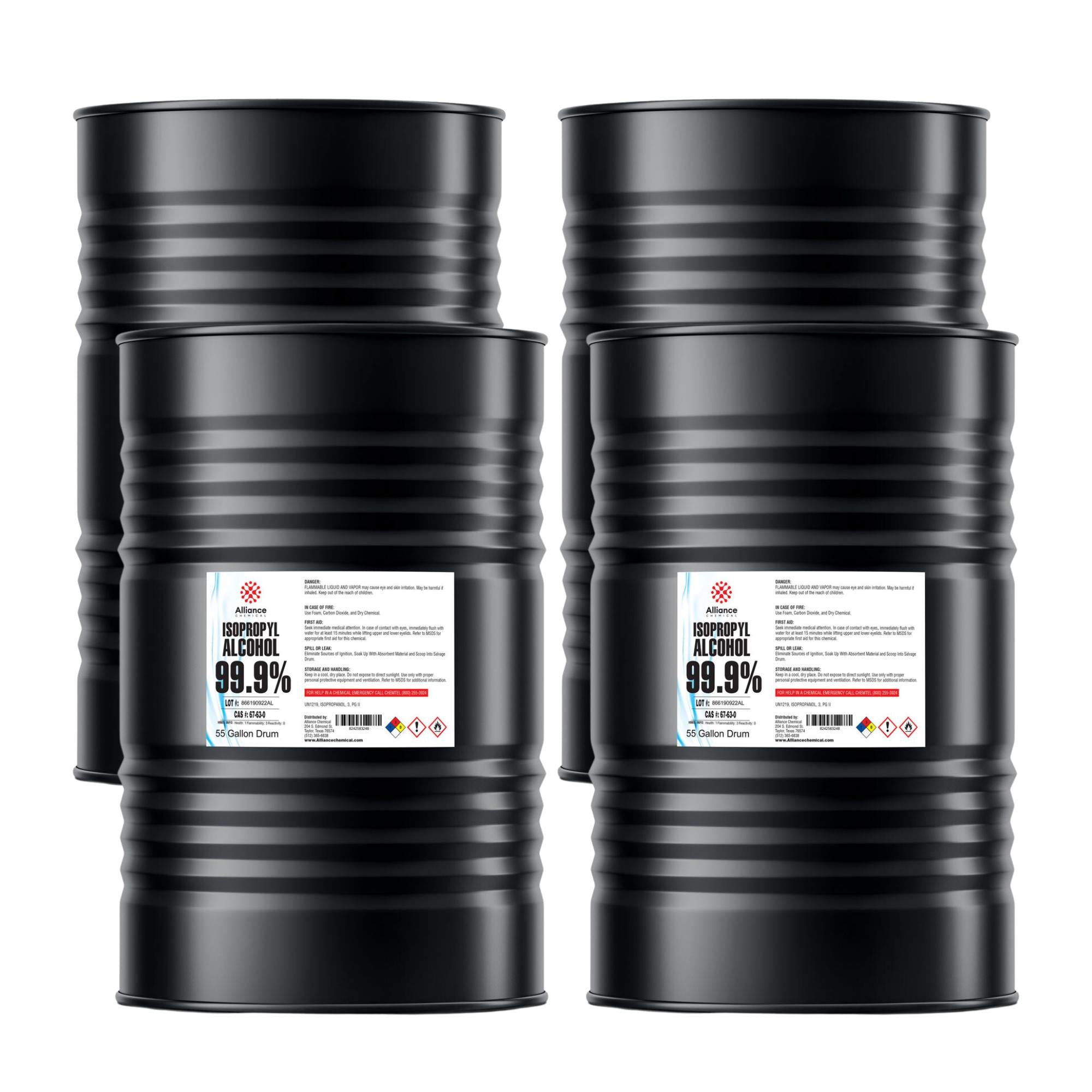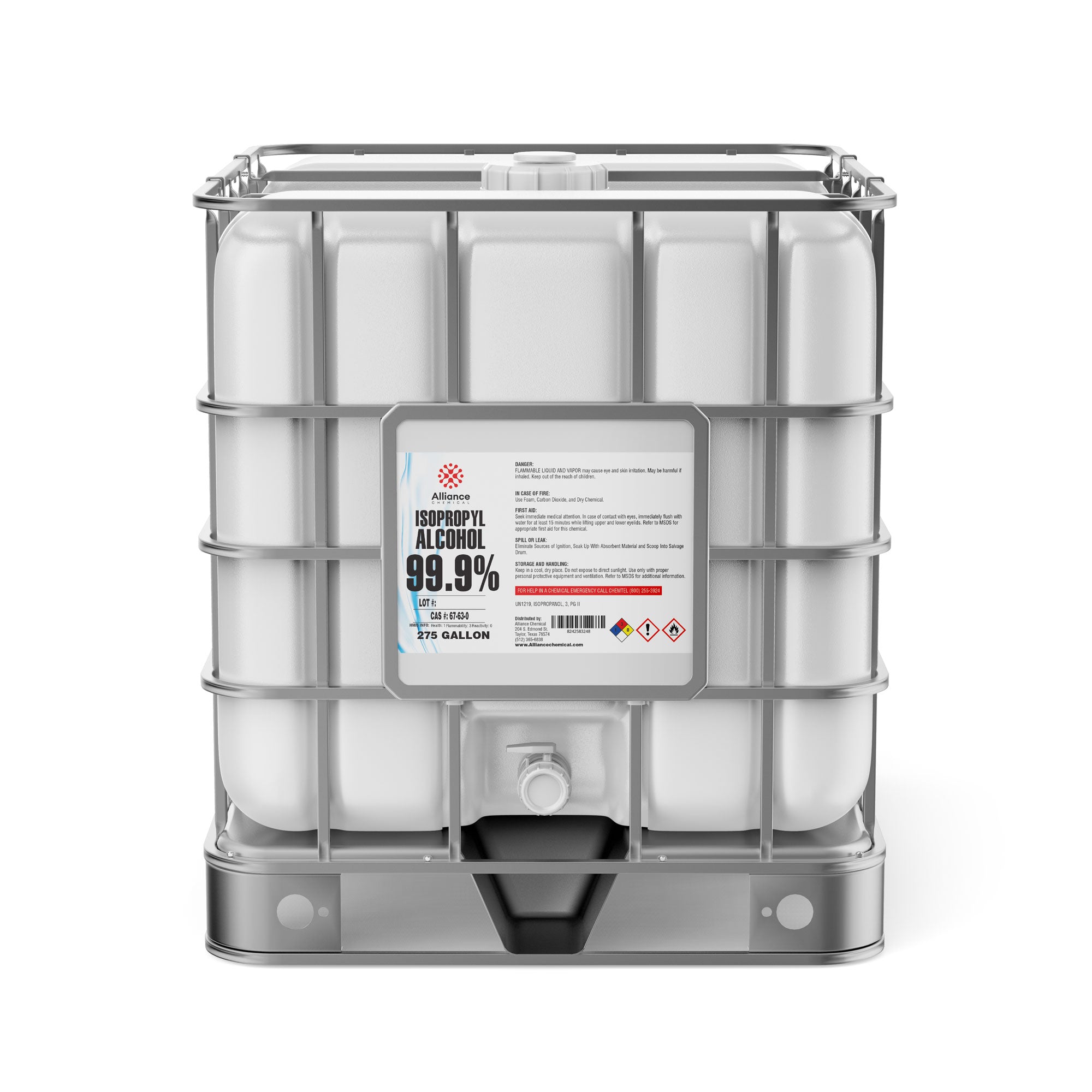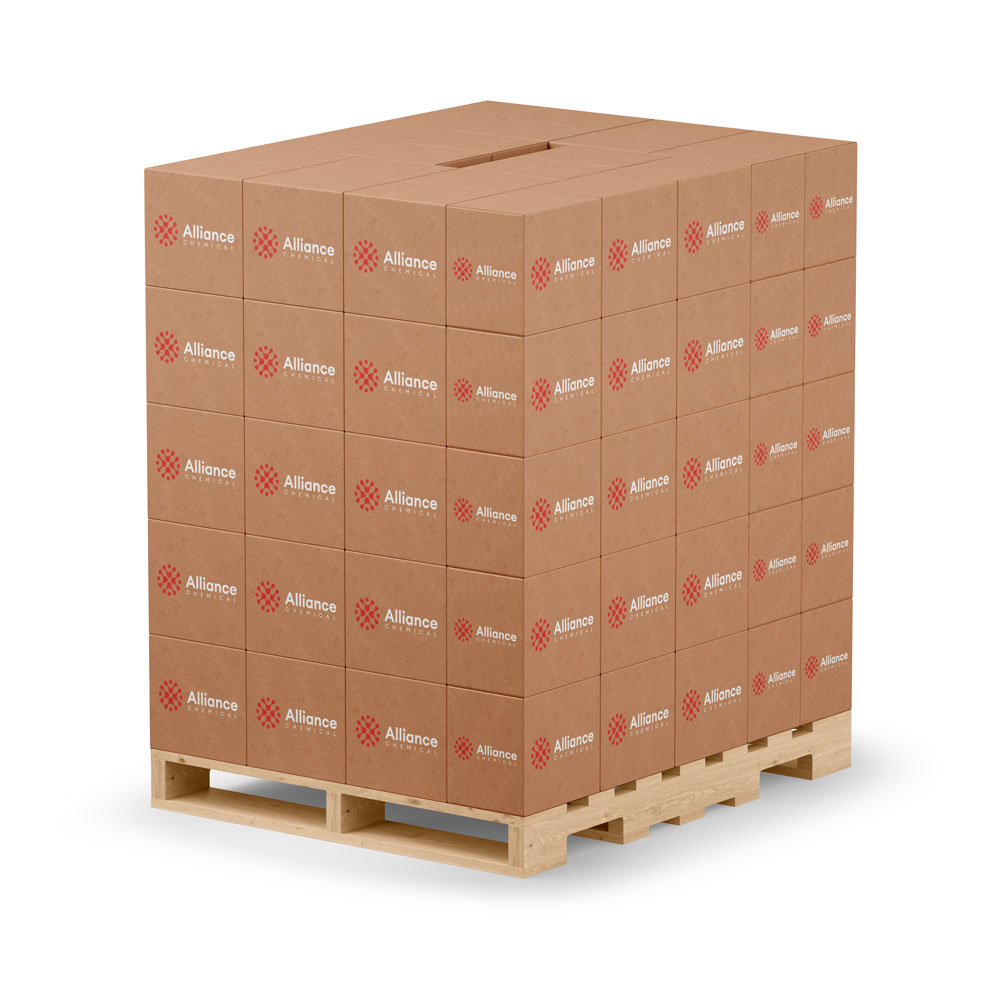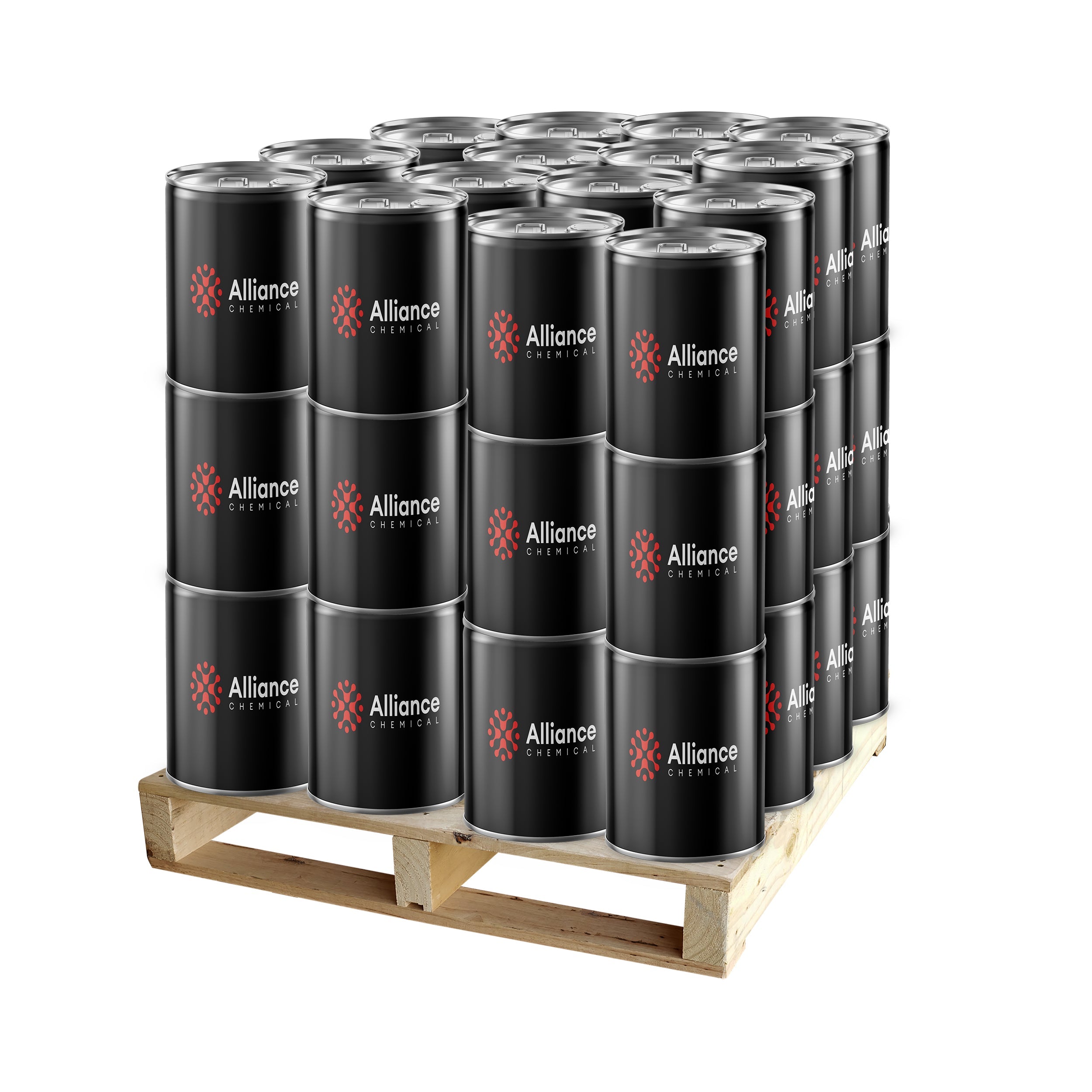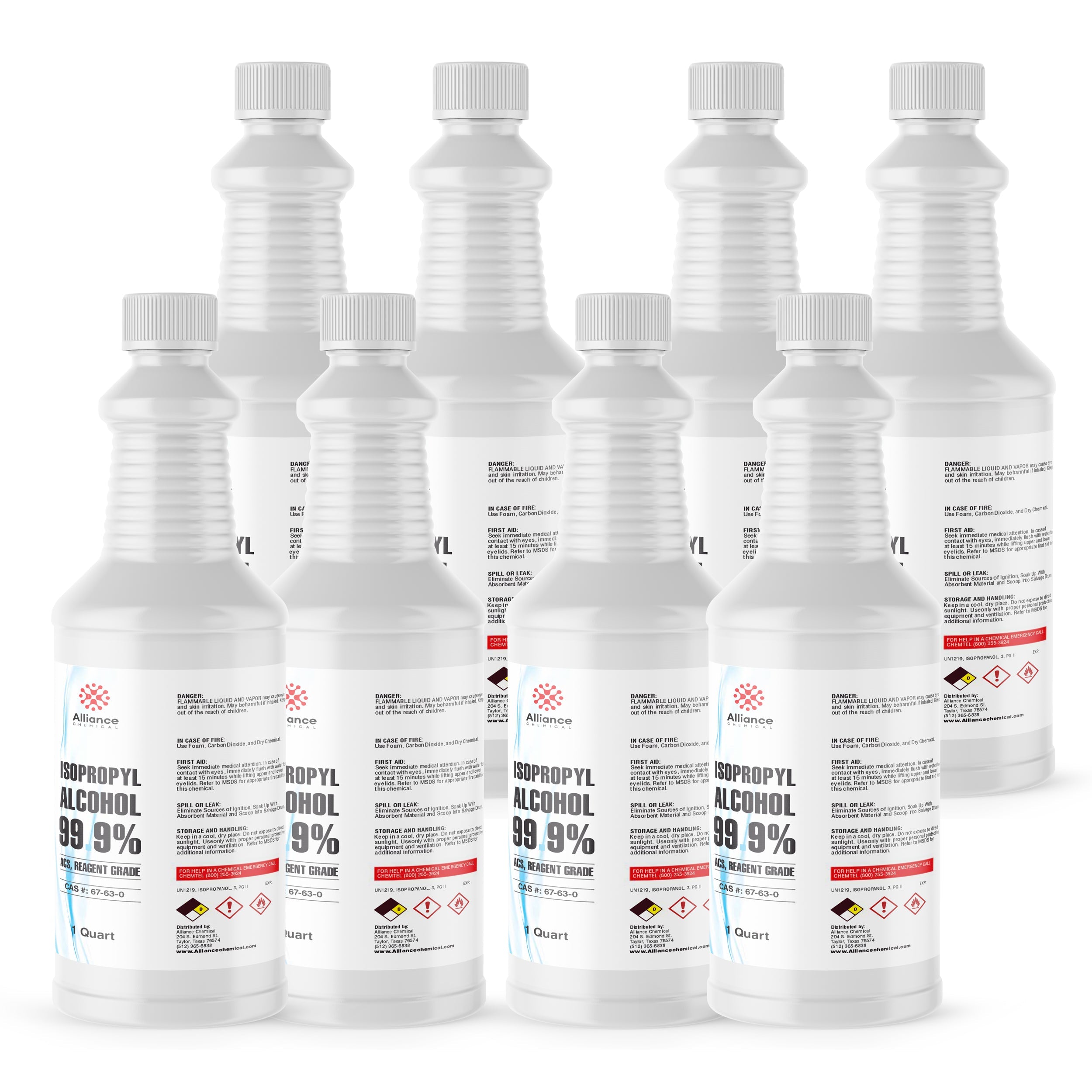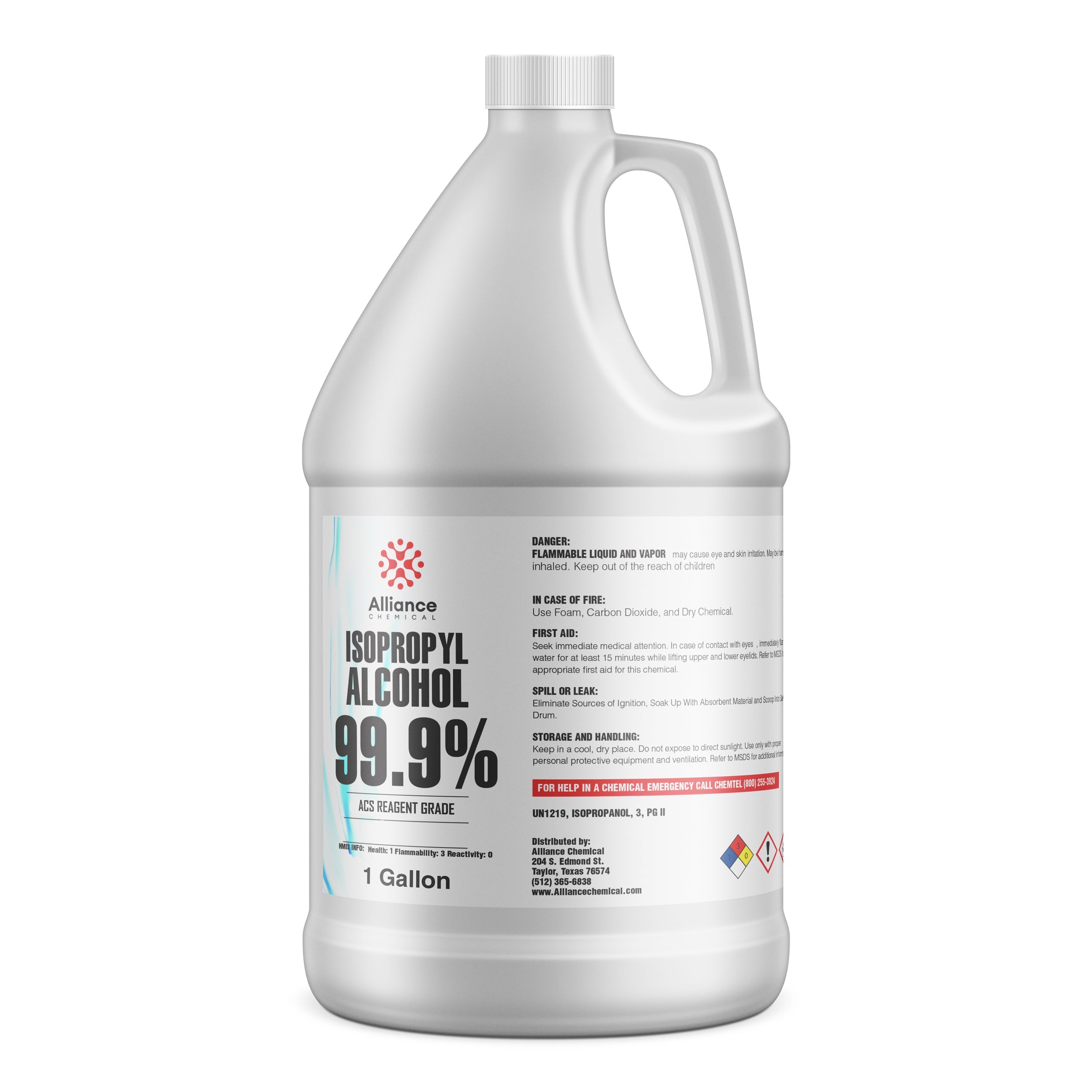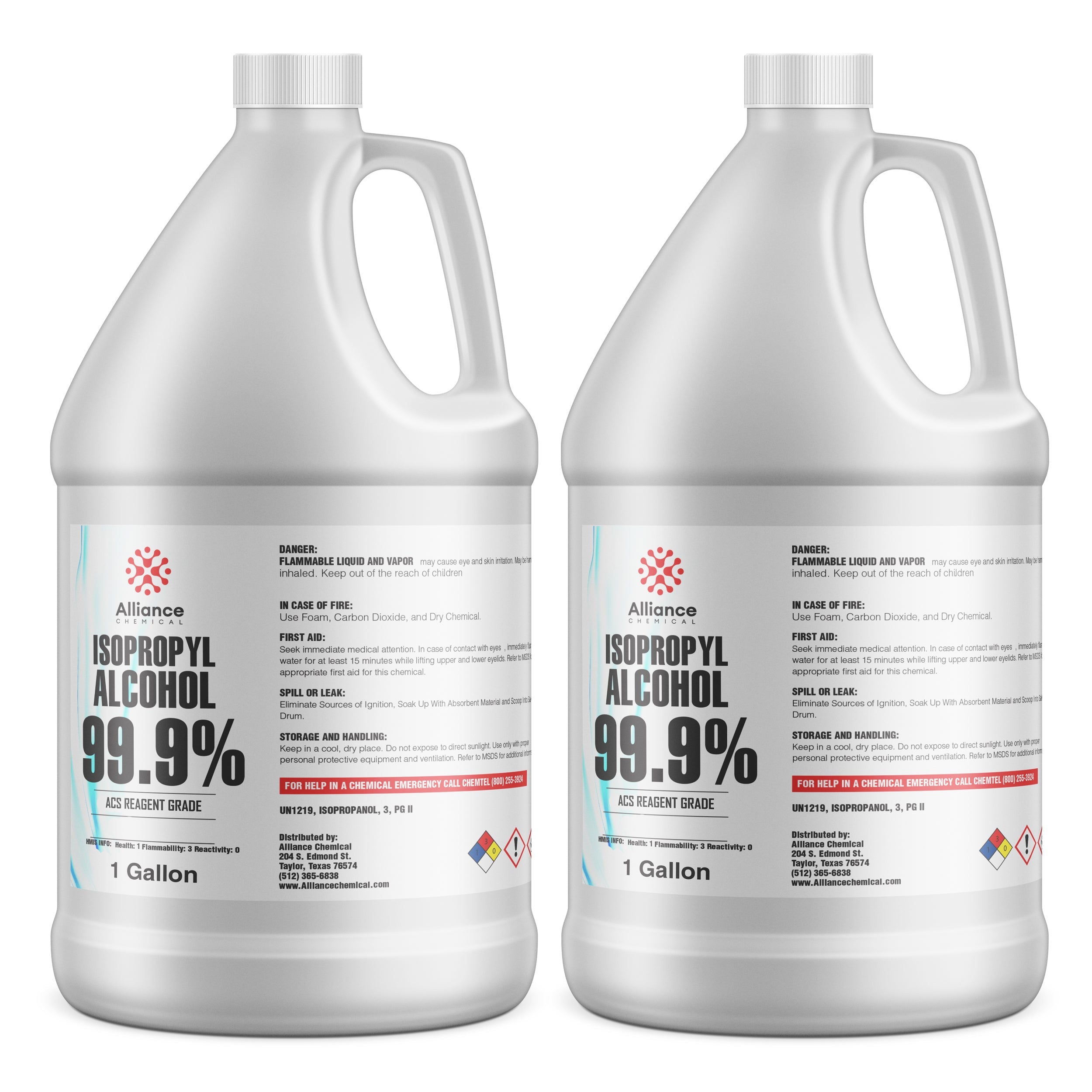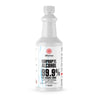Isopropyl Alcohol 99.9% ACS Reagent Grade
Category : Alcohols
$17.11
Unit price
Quantity
Ask a question
Product Overview
Isopropyl Alcohol 99.9% ACS Reagent Grade (IPA), also known as isopropanol or 2-propanol, is a high-purity organic solvent meeting American Chemical Society (ACS) specifications for analytical and research applications. This pharmaceutical-grade alcohol provides exceptional purity, consistent performance, and reliable quality for laboratory analysis, electronics manufacturing, pharmaceutical production, and industrial cleaning applications where trace impurities can compromise results or product quality.
As an ACS Reagent Grade chemical with 99.9% minimum purity, this isopropyl alcohol undergoes rigorous quality control testing and meets strict specifications for trace metal content, UV absorbance, residue after evaporation, and other critical parameters. Each batch is manufactured through precision distillation processes and tested to ensure compliance with ACS requirements, providing the reliability and documentation needed for regulated industries and quality-critical applications.
The molecular structure of isopropyl alcohol (C3H8O) provides unique solvent characteristics including rapid evaporation, excellent miscibility with water and organic solvents, and effective dissolution of oils, resins, and many organic compounds. These properties make it one of the most versatile and widely-used solvents across scientific, industrial, and technical applications globally.
Technical Specifications
- Chemical Formula: C3H8O (CH3CHOHCH3)
- CAS Number: 67-63-0
- Purity: 99.9% minimum (ACS Reagent Grade)
- Molecular Weight: 60.1 g/mol
- Boiling Point: 82°C (180°F) at 760 mmHg
- Melting Point: -89°C (-128°F)
- Specific Gravity: 0.785 at 20°C
- Flash Point: 12°C (54°F) - Closed Cup
- Autoignition Temperature: 399°C (750°F)
- Vapor Pressure: 33 mmHg at 20°C
- Vapor Density: 2.1 (Air = 1)
- Appearance: Clear, colorless, mobile liquid
- Odor: Characteristic mild alcoholic odor
- Solubility: Completely miscible with water, alcohols, ethers, and most organic solvents
- Evaporation Rate: Fast (Butyl Acetate = 1)
- Chemical Stability: Stable under normal conditions; avoid strong oxidizers
- Residue after Evaporation: <0.001% maximum (ACS specification)
Laboratory and Analytical Applications
Chromatography and Spectroscopy
ACS Reagent Grade isopropyl alcohol serves as a critical solvent in high-performance liquid chromatography (HPLC), gas chromatography (GC), and thin-layer chromatography (TLC) applications. The exceptional purity and low UV absorbance make it suitable for UV-Vis spectroscopy, ensuring minimal interference in analytical measurements. Laboratories use it for sample preparation, mobile phase formulation, and instrument cleaning where trace contaminants could compromise analytical accuracy.
The low residue after evaporation specification (less than 0.001%) ensures that sample concentration procedures don't introduce non-volatile contaminants that could interfere with trace analysis. This is particularly critical in environmental testing, pharmaceutical analysis, and forensic chemistry where detection limits in the parts-per-billion range are common.
Laboratory Equipment Cleaning and Maintenance
Research laboratories rely on 99.9% isopropyl alcohol for cleaning analytical instrumentation, glassware, optics, and sensitive equipment. The rapid evaporation and minimal residue characteristics make it ideal for cleaning microscope lenses, spectrophotometer cells, refractometer prisms, and other optical components without leaving streaks or deposits. It effectively removes oils, fingerprints, and organic residues from glassware between analyses.
The solvent is particularly valuable for maintaining autosamplers, injection ports, detector cells, and flow-through components in analytical instruments. Regular cleaning with high-purity IPA prevents cross-contamination between samples and maintains instrument sensitivity by removing accumulated organic deposits.
Chemical Synthesis and Organic Chemistry
Organic chemistry laboratories use isopropyl alcohol as both a reaction solvent and reagent in various synthetic pathways. It serves in reduction reactions, esterifications, and as a hydrogen donor in catalytic transfer hydrogenation. The ACS grade purity ensures that trace impurities don't interfere with reaction mechanisms or product purity in research synthesis.
Sample Preparation and Extraction
Analytical chemists use isopropyl alcohol for extracting organic compounds from biological matrices, environmental samples, and complex mixtures. The solvent's ability to dissolve both polar and non-polar compounds makes it effective for broad-spectrum extraction procedures. It's commonly used in preparing samples for GC-MS, LC-MS, and other hyphenated analytical techniques.
Electronics and Semiconductor Applications
Precision Electronics Cleaning
Electronics manufacturers and repair facilities use 99.9% isopropyl alcohol for cleaning circuit boards, removing flux residues after soldering, and preparing surfaces for conformal coating application. The high purity ensures no conductive residues remain after evaporation, preventing shorts or electrical failures in sensitive electronic assemblies. The rapid evaporation rate minimizes exposure time to moisture-sensitive components.
IPA effectively dissolves rosin flux, no-clean flux residues, oils from handling, and particulate contamination without damaging components, solder masks, or substrate materials. It's safe for use on most plastics, elastomers, and insulating materials commonly found in electronic assemblies, though compatibility testing is always recommended for critical applications.
Semiconductor Wafer Processing
Semiconductor fabs use high-purity isopropyl alcohol in wafer cleaning sequences, photoresist processes, and as a drying aid after aqueous cleaning steps. The solvent's ability to displace water and evaporate cleanly helps prevent water spotting and particle deposition on wafer surfaces. Some fabs use IPA vapor drying systems (Marangoni drying) to achieve spot-free, particle-free wafer surfaces after wet processing.
Display Manufacturing and Optics
Manufacturers of LCD displays, OLED screens, optical components, and precision lenses use isopropyl alcohol for cleaning substrates, removing processing residues, and preparing surfaces for coating deposition. The streak-free evaporation is critical for optical applications where any residue would affect light transmission or cause defects in thin-film coatings.
Pharmaceutical and Biotechnology Applications
Pharmaceutical Manufacturing
Pharmaceutical facilities use ACS grade isopropyl alcohol in API (Active Pharmaceutical Ingredient) synthesis, crystallization processes, and as a processing solvent in drug formulation. The documented purity and compliance with compendial standards support regulatory requirements in pharmaceutical manufacturing. It's also used for cleaning and sanitizing equipment, particularly in non-sterile manufacturing areas.
Laboratory Disinfection and Surface Preparation
Biological laboratories use 70% isopropyl alcohol solutions (diluted from 99.9% stock) as a surface disinfectant for laboratory benches, biosafety cabinets, and equipment. The 70% concentration provides optimal antimicrobial efficacy against bacteria, fungi, and enveloped viruses. Starting with 99.9% IPA allows labs to prepare precise dilutions with sterile or deionized water for validated cleaning procedures.
Protein and Nucleic Acid Precipitation
Molecular biology laboratories use cold isopropyl alcohol to precipitate DNA and RNA from aqueous solutions during extraction and purification procedures. The alcohol reduces the solubility of nucleic acids, causing them to precipitate out of solution for collection by centrifugation. The high purity ensures no contaminants are introduced that could inhibit downstream enzymatic reactions.
Industrial and Manufacturing Applications
Cleaning and Degreasing
Industrial facilities use isopropyl alcohol for degreasing metal parts, cleaning precision components, and removing machining oils and cutting fluids. The fast evaporation allows for rapid cleaning cycles without extended drying times. Unlike petroleum-based solvents, IPA leaves minimal residue and doesn't require extensive rinsing, improving process efficiency.
Printing and Coating Industries
Printing operations use isopropyl alcohol as a fountain solution additive in offset lithography to control ink-water balance and improve print quality. It's also used for cleaning printing plates, rollers, and press components. In coating applications, IPA serves as a solvent and viscosity modifier in various formulations including inks, lacquers, and specialty coatings.
Adhesives and Sealants
Manufacturers use isopropyl alcohol as a solvent in adhesive formulations and for surface preparation before bonding. Cleaning substrates with IPA removes contaminants that could compromise adhesive bonding strength. The solvent is particularly effective for preparing metal, glass, and plastic surfaces for structural bonding applications.
Quality Control and Inspection
Quality control laboratories across industries use isopropyl alcohol for cleaning test specimens, preparing surfaces for inspection, and maintaining measurement equipment. The rapid evaporation and residue-free characteristics ensure accurate measurements and inspections without contamination from cleaning solvents.
Proper Usage and Dilution Guidelines
While 99.9% isopropyl alcohol is suitable for many applications as-supplied, certain uses require dilution with deionized or distilled water. For surface disinfection, a 70% IPA solution provides optimal antimicrobial activity - the water content slows evaporation, increasing contact time and improving cell wall penetration. To prepare 70% IPA from 99.9% stock, mix approximately 70 parts IPA with 30 parts water by volume.
For electronics cleaning, use 99.9% IPA undiluted for maximum effectiveness and rapid drying. For general purpose cleaning where slower evaporation is desired, 90-95% solutions can be prepared. Always add alcohol to water (not water to alcohol) when preparing dilutions, and mix thoroughly before use.
Apply isopropyl alcohol using lint-free wipes, swabs, or spray application depending on the cleaning task. For electronics, use ESD-safe applicators and wipes designed for cleanroom use. Allow sufficient evaporation time before energizing electronic equipment or conducting tests on cleaned surfaces.
Storage and Handling Best Practices
Store isopropyl alcohol 99.9% in tightly sealed containers in a cool, well-ventilated area away from heat sources, sparks, open flames, and direct sunlight. Storage temperature should not exceed 30°C (86°F). Use only approved flammable liquid storage cabinets meeting NFPA and OSHA requirements. Keep containers grounded and bonded during transfer operations to prevent static discharge.
Storage areas must have adequate fire suppression systems, spill containment, and emergency response equipment. Post appropriate hazard warnings and maintain safety data sheets (SDS) accessible to all personnel. Keep incompatible materials (strong oxidizers, acids, bases) separated from isopropyl alcohol storage.
Containers should be labeled with content, concentration, date received, and appropriate hazard warnings. Use original manufacturer containers when possible, or transfer only to compatible containers (glass, HDPE, certain grades of stainless steel). Avoid prolonged storage in plastic containers that may leach plasticizers into the solvent.
Isopropyl alcohol is hygroscopic and will absorb water from air if containers are left open. Keep containers tightly sealed when not in use to maintain the 99.9% purity specification. Shelf life is typically 2-3 years when stored properly in sealed containers.
Safety Precautions and Personal Protection
Isopropyl alcohol 99.9% is a highly flammable liquid and vapor (NFPA Rating: Health 1, Flammability 3, Reactivity 0). All personnel must be trained on flammable liquid hazards before handling. Work in well-ventilated areas or use local exhaust ventilation to maintain vapor concentrations below occupational exposure limits (OSHA PEL: 400 ppm, ACGIH TLV: 200 ppm).
Required personal protective equipment includes:
- Eye Protection: Chemical splash goggles or safety glasses with side shields
- Hand Protection: Nitrile or neoprene gloves for brief contact; butyl rubber gloves for extended exposure
- Body Protection: Lab coat or chemical-resistant apron; flame-resistant clothing for large-scale operations
- Respiratory Protection: Not normally required with adequate ventilation; use organic vapor respirator if ventilation is inadequate
Eliminate all ignition sources in work areas including open flames, hot surfaces, sparks, and static electricity. Use explosion-proof electrical equipment in areas where flammable vapors may be present. Ground all transfer equipment and containers to prevent static buildup.
Emergency equipment must include eyewash stations and safety showers within 10 seconds travel time. Maintain appropriate fire extinguishers (Class B for flammable liquids) and spill response materials. In case of spills, eliminate ignition sources, ventilate area, and absorb with inert material for proper disposal.
For skin contact, wash immediately with soap and water. For eye contact, flush with water for 15 minutes and seek medical attention. If inhaled, move to fresh air and seek medical attention if symptoms develop. If swallowed, do not induce vomiting; rinse mouth and seek immediate medical attention.
Quality Assurance and Documentation
Alliance Chemical supplies Isopropyl Alcohol 99.9% ACS Reagent Grade with complete documentation supporting quality and regulatory compliance. Each lot includes a Certificate of Analysis (COA) showing actual test results for ACS specification parameters including assay, residue after evaporation, water content, acidity/alkalinity, UV absorbance, and trace metal content.
Safety Data Sheets (SDS) prepared according to OSHA HazCom and GHS requirements are provided with every order. The product meets ACS specifications as published in "Reagent Chemicals" by the American Chemical Society, ensuring suitability for analytical and research applications requiring documented purity.
For customers requiring additional documentation for quality systems, regulatory submissions, or specific testing, we can provide supporting materials including manufacturer's certifications, lot genealogy, and stability data as available from our suppliers.
Why Choose Alliance Chemical for Isopropyl Alcohol?
As an established chemical distributor, Alliance Chemical provides reliable access to ACS Reagent Grade isopropyl alcohol from quality manufacturers. We maintain consistent inventory levels to support laboratory, industrial, and manufacturing customers with ongoing chemical supply needs. Our technical team can assist with product selection, safety information, and application guidance.
We offer flexible packaging options from laboratory bottles to bulk drums, allowing customers to order the quantity appropriate for their usage rates. Complete documentation, responsive customer service, and reliable delivery help ensure your operations have the high-purity solvents needed when you need them.
Ordering Information
Isopropyl Alcohol 99.9% ACS Reagent Grade available in multiple sizes including 500mL, 1 gallon, 5 gallon, and 55-gallon drums. Contact Alliance Chemical for current pricing, availability, volume discounts, and shipping options. Hazmat shipping fees apply for flammable liquid shipments via ground transportation.
Alliance Chemical, Inc.
Phone: 512-365-6838
Fax: 512-365-6833
Email: alliance@alliancechemical.com
Web: www.alliancechemical.com
| Property | Value |
|---|---|
| Molecular Weight | 60.1 g/mol |
| Formula | C3H8O |
| Assay | 99.9% |
| Flash Point | 12 |
| Form | Liquid |
| Solubility | Complete water miscibility, dissolves many orga... |
| Appearance | Transparent, mobile liquid with high volatility |
| Melting Point | -89 °C |
| Boiling Point | 82 °C |
| Industry | Research, Industrial, Electronics, Laboratory, Semiconductor, Analytical Chemistry, Manufacturing , Pharmaceutical , Biotechnology , Educational , Optics |
Compare Products
| Price |
|---|
| SKU |
| Rating |
| Discount |
| Vendor |
| Tags |
| Weight |
| Stock |
| Short Description |
